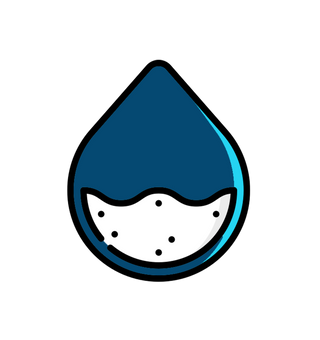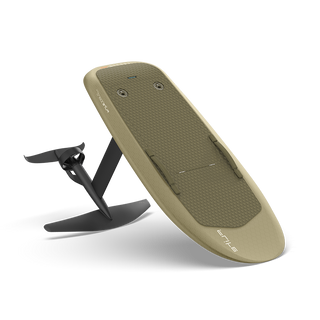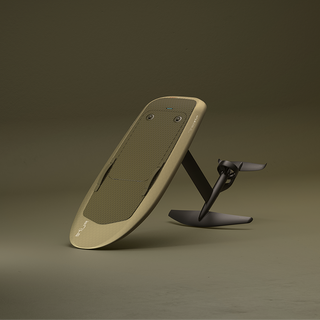Fliteboard PRO is a purposefully designed eFoil for riders with previous board-sports experience, looking to take it up a level.
For lighter/experienced riders that want a lighter-weight, more responsive board. Fliteboard comes standard with a prop guard. Advanced riders can setup “Pro Mode” by removing the prop guard with our prop duct removal kit - this will increase responsiveness, efficiency and run time.
Fliteboard Configuration includes
— Flite Controller
— Wing set includes Front Wing and Stabiliser
— Premium Charger
— eFoil Bag
— Fliteboard Bag
— Accessories Pouch
— 2 Year Warranty
The ultimate ride deserves the ultimate app
Compete against Fliteboarders online
Compete for top spot across four different online leaderboards that show the best riders each week, month, year... and of all time.


Fliteboard STANDARD
— Size 5’8” x 28” (173cm x 71cm)
— Volume 100 litres
Our most popular and versatile Fliteboard. Suits riders from beginner to advanced. Enough volume and deck area for early planing and easy pop-up, yet still highly manoeuvrable and easy to transport.
Flitebaord PRO
— Size 5’0” x 24.5” (152cm x 62cm)
— Volume 67 litres
For lighter/experienced riders that want a lighter-weight, more responsive board.
Flitebaord ULTRA
— Size 4’2” x 23” (128cm x 58cm)
— Volume 54 litres
For experienced riders that want to push the limits on the smallest, board available. Foot straps come standard, backflips are optional. Advanced riders can setup “Pro Mode” by removing the prop guard with our prop duct removal kit - this will increase responsiveness, efficiency and run time.
Flitebaord AIR
— Size 6’0” x 30” (183cm x 76cm)
— Volume 150 litres
High quality inflatable board. Suitable for beginners, Fliteschools, yachts and commercial operators. 50% more buoyant than the standard board to make learning even easier. Packs down for easy transportation.
Fliteboard was an original idea developed by our Founder David Trewern in 2016. Like many new things, similar ideas developed concurrently in different parts of the world. And from further research, we now know that there is quite a story to the first origins of the eFoil.
2008
In a 2008 Master’s program in Naval Architecture at the KTH Royal Institute of Technology in Sweden, their team had a task to create a new type of aquatic vehicle. The requirements were that this vehicle had to be silent, electric, not create wake and be able to carry one person at a speed of 15 knots. The first electric hydrofoil board was created by Professor Jacob Kuttenkeuler and a group of 15 students taking part in a project called EVOLO. Their concept was a weight-shift controlled board that was ridden in the kneeling position.
2009
After working on it for two semesters, they came up with the first electric hydrofoil, which was successfully demonstrated in the spring of 2009.
2016
A number of similar concepts began developing independently of each other. Electric motors and batteries had developed to the point that the propulsion system could be light enough and powerful enough to be attached to the wing itself, under the water, and provide enough speed to lift the board. Some of the people with the concept were already in the watersport business. Others were just surfers or kiteboarders who had dreams of finding freedom and not being reliant on wind/waves to enjoy the water.
Kai Concepts was the first to show a working prototype of a stand-up eFoil in August 2016. 'Jetfoiler' was created by Don Montague and his team, also the developers of the kiteboat. Don coined the term eFoil on his website at the time: “a watercraft equipped with hydrofoils that uses an electric motor or motors for propulsion.”
2017
In January 2017, Liftfoils in Puerto Rico released a teaser video of their prototype. In October 2017, Fliteboard launched their website and as the product continued to be developed over the following months various updates were made showcasing some innovative technology such as a purpose-designed unibody fuselage (combining the motor and foil into one unit to improve stability and efficiency), a Flitebox with innovate heat-sink cooling system and custom wings specifically designed for eFoiling, as well as a reduction gearbox featuring 20 virtual gears and cruise control.
2018
In May 2018, Lift came to market with their version of the eFoil, which they began shipping later. Fliteboard began shipping their boards in June 2018. Nowadays, there are many companies manufacturing eFoils, but so far, only a few have proved that their product is robust and reliable enough to withstand the harsh marine environment. eFoiling continues to advance.
2020
In April 2020, Flite App was launched. This allowed Fliteboard users to measure performance statistics such as distance, speed, roll, pitch, power and battery statistics, as well as replay and share their ride using GPS Flite Track. Fliteboard's goal is to help accelerate the shift towards more environmentally friendly powered marine craft and we will continue to innovate and push the boundaries in this regard.
2021
Flite released the Series 2 Fliteboard. Series 2 introduced a new electronics and connection concept, the world's smallest eFoil (The Fliteboard ULTRA). New purpose-designed eFoil wings were also launched, including the first dihedral eFoil wings, the Flow series. Fliteboard also introduced True Glide, a free-spinning propeller with one way bearing for powered off wave rides.
From a spark of inspiration, to a globally recognised company producing the world's most highly-awarded electric hydrofoils, Flite has come a long way in a short time.
We got here by relentlessly refining and testing our design with our eyes on the ultimate ride. Excellence is, after all, an approach – not a destination.
Our origin, however, was far more whimsical.
The idea for a motorised hydrofoil arrived on a windless day in 2016 as a 'lightbulb moment'.
Flite's founder, former kite-surfing world record holder and serial entrepreneur David Trewern, was at a kitefoiling event when he thought: ‘What if I didn’t have to wait for the wind. What if I could just attach an electric motor to my foil?’
That dream became a sketch and the kitchen table, a workshop. The 3D printer went into overdrive and late nights became early mornings. Dozens of prototypes later, David flew for the first time.
"It was magical. The feeling of freedom was like nothing else." – David Trewern
Flite now has more than 200 authorised partners selling our boards, Fliteschools across the world, and offices in three countries: Australia, The Netherlands and The United States. The company includes Naval Architects, Product Designers, Mechanical, Electronic and Software Engineers; and is focused on the intersection between electric vehicle technology and hydrofoil design.
In 2021 Flite set records for the fastest eFoil speed in the world, and hosted the first official international eFoiling race – the Flite Cup. In 2022 Flite Ambassador Tom Court and big wave surfer Glynn Ovens used Flite’s eFoils to surf the biggest waves ever ridden (Nazare) on an electric hydrofoil.
Flite has patented five new inventions and just released our latest series of upgrades, Flite Series 2.2, which melds all of our new technology into whisper-quiet rides.
Flite's full range includes the easy riding AIR, popular and dynamic Fliteboard, adrenaline inducing PRO and the acrobatic ULTRA. Our latest innovations in battery technology, management and thermal control; create new benchmarks in electric marine power.
The best part though, is the thrill we get from the ride.
Our most popular board planes early yet remains agile for advanced riders. Quality construction and modular design means you can teach friends, or add advanced wings to progress your ride.


Fliteboard PRO eFoil
- Unit price
- /per

Service required

clean after salt water

Too much sun can modify the color

Keep dry the e-boxes
Adding product to your cart
Fliteboard PRO is a purposefully designed eFoil for riders with previous board-sports experience, looking to take it up a level.
For lighter/experienced riders that want a lighter-weight, more responsive board. Fliteboard comes standard with a prop guard. Advanced riders can setup “Pro Mode” by removing the prop guard with our prop duct removal kit - this will increase responsiveness, efficiency and run time.
Fliteboard Configuration includes
— Flite Controller
— Wing set includes Front Wing and Stabiliser
— Premium Charger
— eFoil Bag
— Fliteboard Bag
— Accessories Pouch
— 2 Year Warranty
The ultimate ride deserves the ultimate app
Compete against Fliteboarders online
Compete for top spot across four different online leaderboards that show the best riders each week, month, year... and of all time.


Fliteboard STANDARD
— Size 5’8” x 28” (173cm x 71cm)
— Volume 100 litres
Our most popular and versatile Fliteboard. Suits riders from beginner to advanced. Enough volume and deck area for early planing and easy pop-up, yet still highly manoeuvrable and easy to transport.
Flitebaord PRO
— Size 5’0” x 24.5” (152cm x 62cm)
— Volume 67 litres
For lighter/experienced riders that want a lighter-weight, more responsive board.
Flitebaord ULTRA
— Size 4’2” x 23” (128cm x 58cm)
— Volume 54 litres
For experienced riders that want to push the limits on the smallest, board available. Foot straps come standard, backflips are optional. Advanced riders can setup “Pro Mode” by removing the prop guard with our prop duct removal kit - this will increase responsiveness, efficiency and run time.
Flitebaord AIR
— Size 6’0” x 30” (183cm x 76cm)
— Volume 150 litres
High quality inflatable board. Suitable for beginners, Fliteschools, yachts and commercial operators. 50% more buoyant than the standard board to make learning even easier. Packs down for easy transportation.
Fliteboard was an original idea developed by our Founder David Trewern in 2016. Like many new things, similar ideas developed concurrently in different parts of the world. And from further research, we now know that there is quite a story to the first origins of the eFoil.
2008
In a 2008 Master’s program in Naval Architecture at the KTH Royal Institute of Technology in Sweden, their team had a task to create a new type of aquatic vehicle. The requirements were that this vehicle had to be silent, electric, not create wake and be able to carry one person at a speed of 15 knots. The first electric hydrofoil board was created by Professor Jacob Kuttenkeuler and a group of 15 students taking part in a project called EVOLO. Their concept was a weight-shift controlled board that was ridden in the kneeling position.
2009
After working on it for two semesters, they came up with the first electric hydrofoil, which was successfully demonstrated in the spring of 2009.
2016
A number of similar concepts began developing independently of each other. Electric motors and batteries had developed to the point that the propulsion system could be light enough and powerful enough to be attached to the wing itself, under the water, and provide enough speed to lift the board. Some of the people with the concept were already in the watersport business. Others were just surfers or kiteboarders who had dreams of finding freedom and not being reliant on wind/waves to enjoy the water.
Kai Concepts was the first to show a working prototype of a stand-up eFoil in August 2016. 'Jetfoiler' was created by Don Montague and his team, also the developers of the kiteboat. Don coined the term eFoil on his website at the time: “a watercraft equipped with hydrofoils that uses an electric motor or motors for propulsion.”
2017
In January 2017, Liftfoils in Puerto Rico released a teaser video of their prototype. In October 2017, Fliteboard launched their website and as the product continued to be developed over the following months various updates were made showcasing some innovative technology such as a purpose-designed unibody fuselage (combining the motor and foil into one unit to improve stability and efficiency), a Flitebox with innovate heat-sink cooling system and custom wings specifically designed for eFoiling, as well as a reduction gearbox featuring 20 virtual gears and cruise control.
2018
In May 2018, Lift came to market with their version of the eFoil, which they began shipping later. Fliteboard began shipping their boards in June 2018. Nowadays, there are many companies manufacturing eFoils, but so far, only a few have proved that their product is robust and reliable enough to withstand the harsh marine environment. eFoiling continues to advance.
2020
In April 2020, Flite App was launched. This allowed Fliteboard users to measure performance statistics such as distance, speed, roll, pitch, power and battery statistics, as well as replay and share their ride using GPS Flite Track. Fliteboard's goal is to help accelerate the shift towards more environmentally friendly powered marine craft and we will continue to innovate and push the boundaries in this regard.
2021
Flite released the Series 2 Fliteboard. Series 2 introduced a new electronics and connection concept, the world's smallest eFoil (The Fliteboard ULTRA). New purpose-designed eFoil wings were also launched, including the first dihedral eFoil wings, the Flow series. Fliteboard also introduced True Glide, a free-spinning propeller with one way bearing for powered off wave rides.
From a spark of inspiration, to a globally recognised company producing the world's most highly-awarded electric hydrofoils, Flite has come a long way in a short time.
We got here by relentlessly refining and testing our design with our eyes on the ultimate ride. Excellence is, after all, an approach – not a destination.
Our origin, however, was far more whimsical.
The idea for a motorised hydrofoil arrived on a windless day in 2016 as a 'lightbulb moment'.
Flite's founder, former kite-surfing world record holder and serial entrepreneur David Trewern, was at a kitefoiling event when he thought: ‘What if I didn’t have to wait for the wind. What if I could just attach an electric motor to my foil?’
That dream became a sketch and the kitchen table, a workshop. The 3D printer went into overdrive and late nights became early mornings. Dozens of prototypes later, David flew for the first time.
"It was magical. The feeling of freedom was like nothing else." – David Trewern
Flite now has more than 200 authorised partners selling our boards, Fliteschools across the world, and offices in three countries: Australia, The Netherlands and The United States. The company includes Naval Architects, Product Designers, Mechanical, Electronic and Software Engineers; and is focused on the intersection between electric vehicle technology and hydrofoil design.
In 2021 Flite set records for the fastest eFoil speed in the world, and hosted the first official international eFoiling race – the Flite Cup. In 2022 Flite Ambassador Tom Court and big wave surfer Glynn Ovens used Flite’s eFoils to surf the biggest waves ever ridden (Nazare) on an electric hydrofoil.
Flite has patented five new inventions and just released our latest series of upgrades, Flite Series 2.2, which melds all of our new technology into whisper-quiet rides.
Flite's full range includes the easy riding AIR, popular and dynamic Fliteboard, adrenaline inducing PRO and the acrobatic ULTRA. Our latest innovations in battery technology, management and thermal control; create new benchmarks in electric marine power.
The best part though, is the thrill we get from the ride.
Our most popular board planes early yet remains agile for advanced riders. Quality construction and modular design means you can teach friends, or add advanced wings to progress your ride.









